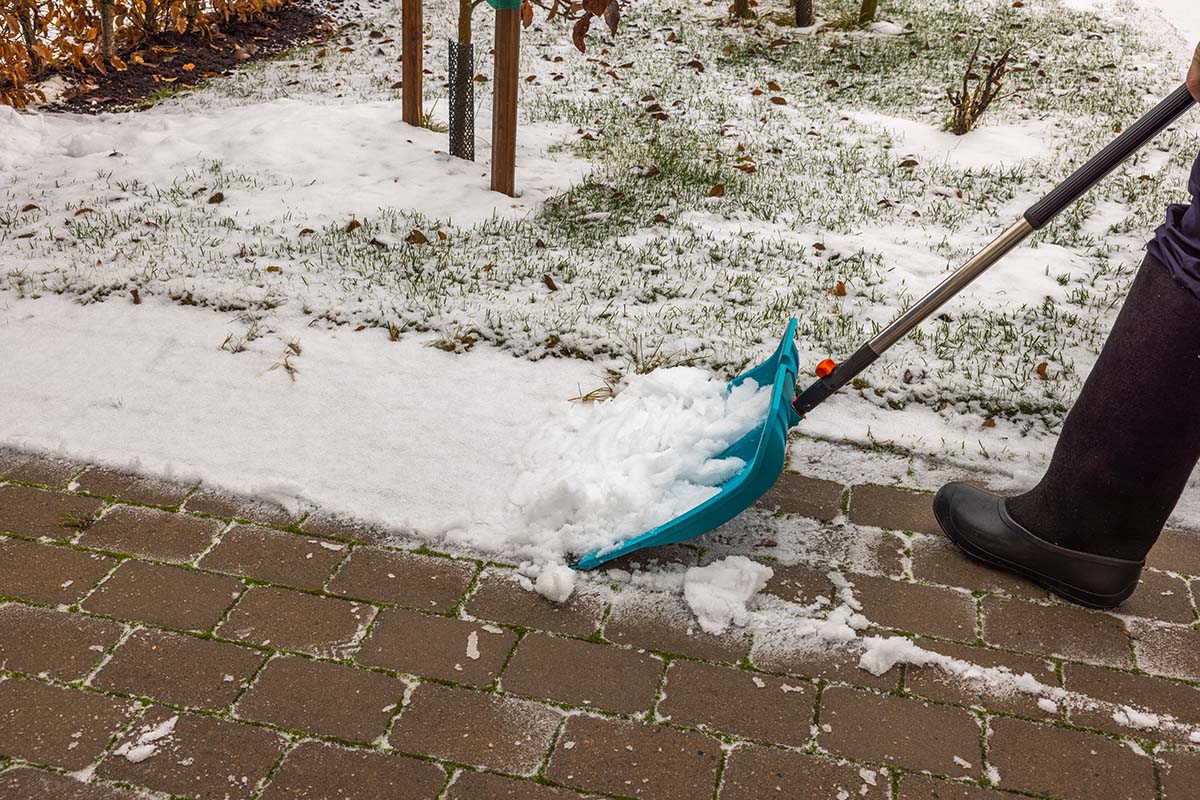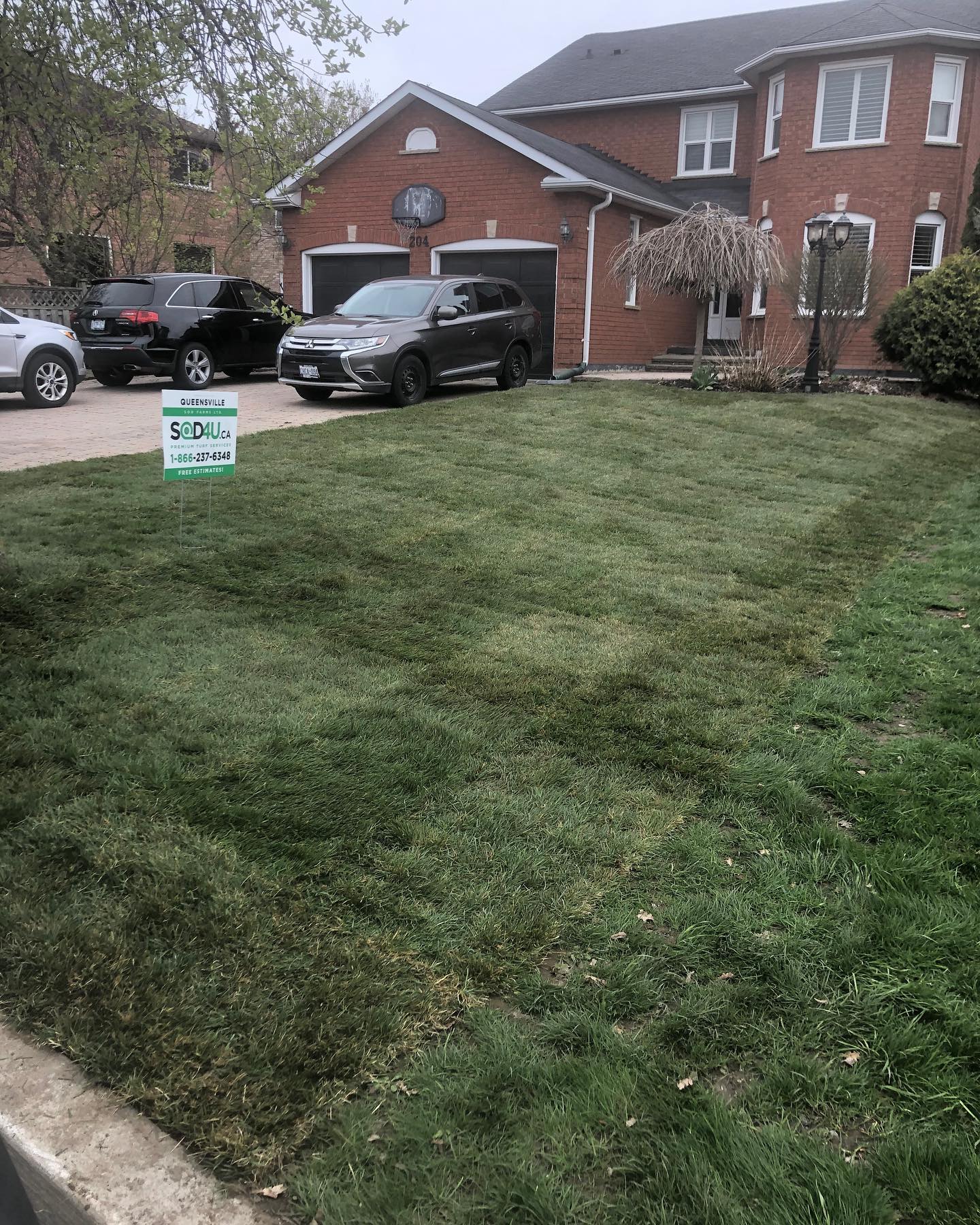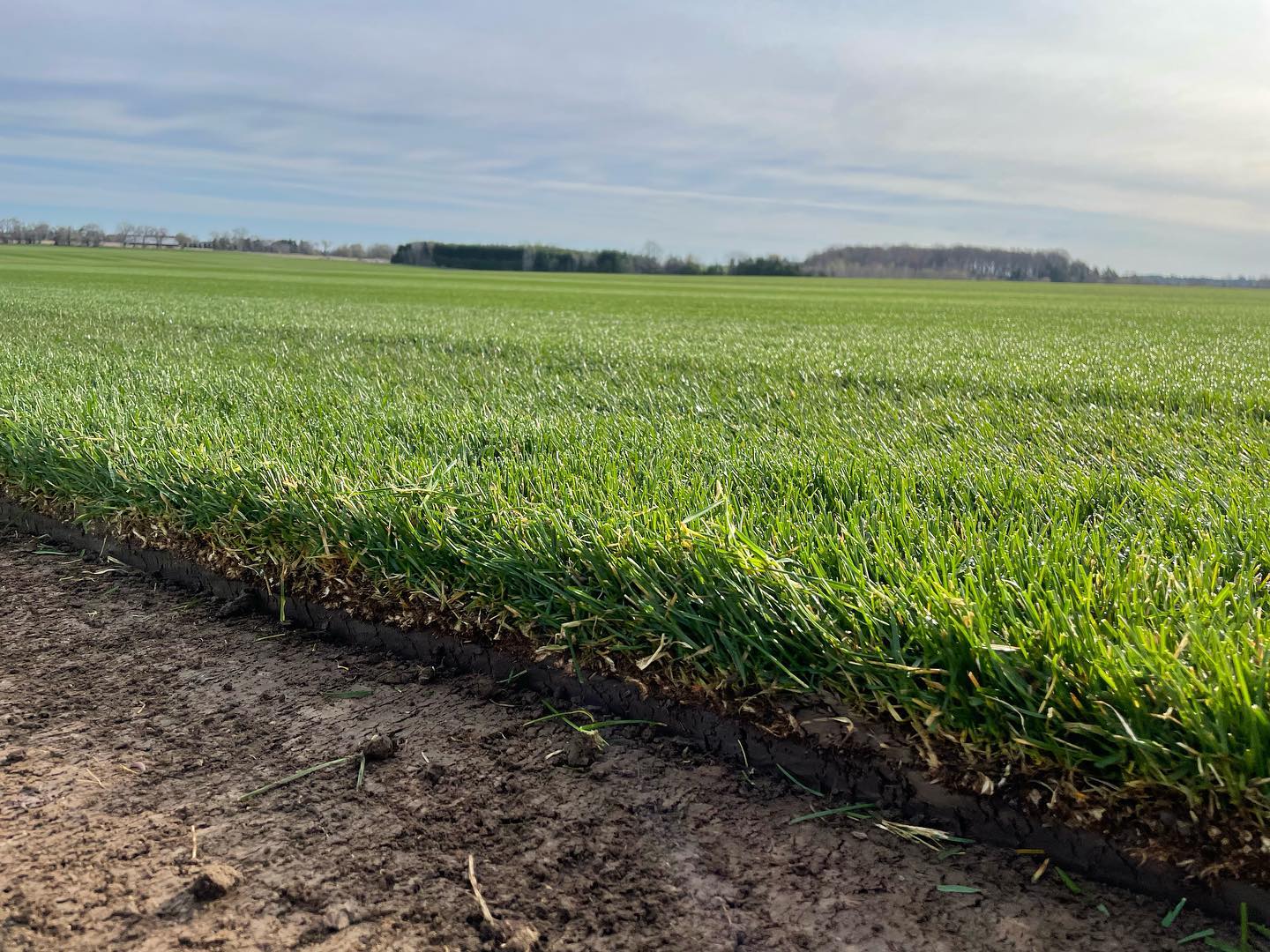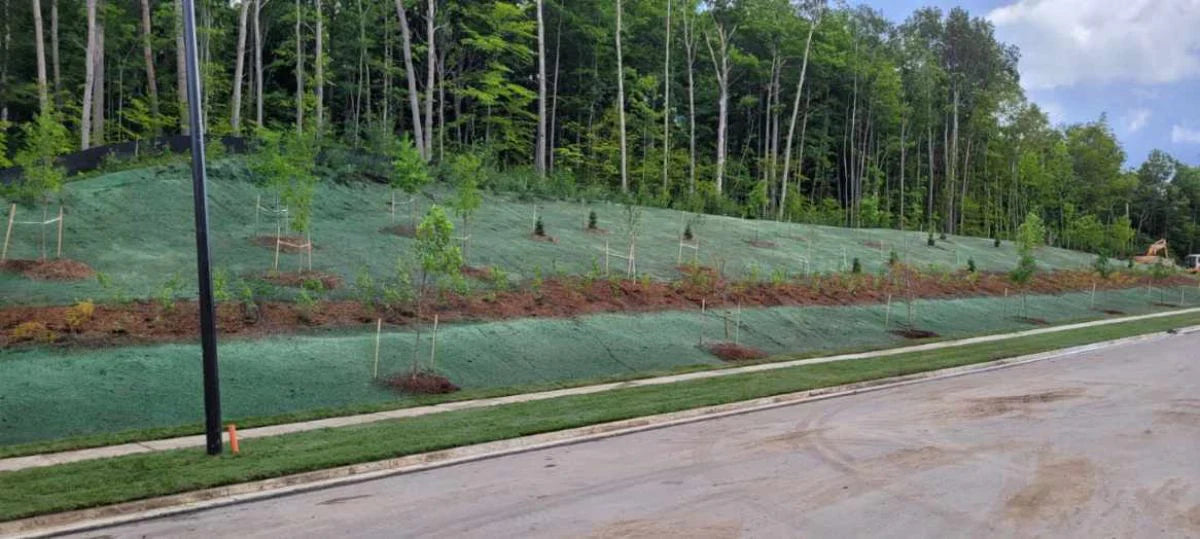We’ve already had the first few sprinkles of snow this winter in Queensville and the GTA. Those first few snowfalls are always charming, and we always enjoy the sight of a fresh blanket of snow on our sod fields. However, that beautiful snow also brings the back-breaking work of snow shoveling, and this year Ontario and the GTA have a lot of shoveling ahead of it. Snow shoveling is essential to keep our paths clear and safe to traverse, but if done without the proper care, it can damage your sod and lawn. Here are Queensville Sod’s top tips to preserving your sod’s health while shoveling winter snow.
Don't Shovel Snow off Your Sod and Grass
Keep your snow shoveling to your paths and driveway. When snow blankets your yard and you’ve pulled out the shovel, keep the clearing away from your grass and sod. Snow is a natural insulator, so removing it will expose your sod to the harsh cold. Your shoveling could also pierce beyond the snow and you’ll find yourself digging up the lawn along with the snow.
Know Your Shoveling Area
To keep your snow shoveling off the grass, you need to know where your paths and driveway are. For shallow snow falls, this stays easy to differentiate. When we have a typical Ontario foot or more, it becomes a lot harder to differentiate the paths from the grass and sod. To mark your shoveling areas, put down reflective snow markers along the sides of the path and your driveway. These long, thin sticks will mark out your shoveling area for deep snow falls. They'll also reveal the proper walking and driving areas for friends and family.
Shovel Away or Along the Sod, not Toward
If you shovel towards your sod and grass, the shovel can slice into your lawn. This can damage roots or dig up sections, removing your lawn’s straight edge. To prevent this, shovel in a direction that moves parallel to this edge or away from it towards the path’s center. This keeps the shovel’s sharp edge aimed at the snow on your path and away from slicing through the lawn.
Don't Pile the Snow on Your Grass
It might seem like a natural conclusion to throw the shoveled snow onto your yard since you aren't clearing it off, but don't. The blanket of snow on your yard is light and doesn't weigh down on the grass. As we’ve said before, putting extra snow on the grass will be heavier and will melt slower. This can stress the sod or contribute to mould developing as temperatures warm up and the piled snow melts slower. The shoveled snow might also have bits of debris or salt that will harm the sod. Instead, pile the snow in a corner of your driveway or a clear patch in your yard.
The Same Best Practices for Snowblowers
If you're one of the lucky ones whose back is saved by a snowblower, the same best practices we’ve mentioned for shovels still apply to care for your sod. Snowblowers can also be devastating to your lawn; their blades can dig through snow and dirt. Keep the snowblower off your lawn, know the proper areas to use it, move it along the edge not toward, and pile the snow off the grass to keep your sod healthy this winter.
Spread Salt Away from the Sod
After shoveling and removing the winter snow, it's best practice to spread some salt to melt any ice underneath and prevent new ice from forming. This salt works by mixing with the ice and snow to turn it into salt water. Salt water has a lower freezing point, so it stays liquid, melting snow and ice.
That salt water may keep your path clear, but it is also detrimental to your grass and sod’s health. If it starts to pour into your lawn, it will parch the dormant sod. Prevent this, by scattering salt a foot away from the edges of your paths and driveway. This will still melt the snow and ice but keeps it from easily flowing into your lawn. Alternatively, some spread sand works great. This instead provides a natural grit on the ground and won’t melt into your lawn.
Time to Bust Out the Shovel
Now that you know our essential tips for maintaining your sod’s health while clearing winter snow, you’re ready to bust the shovel for the next big snowfall in southern Ontario. Remember, the natural snowfall is a light blanket for the sod that insulates it from the harsh cold of winter. The best snow shoveling for your sod is to leave that snow alone. If you have other questions about winter care for your sod, be sure to browse our other articles. Otherwise, contact us at Queensville sod.





